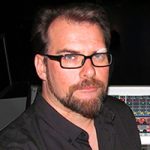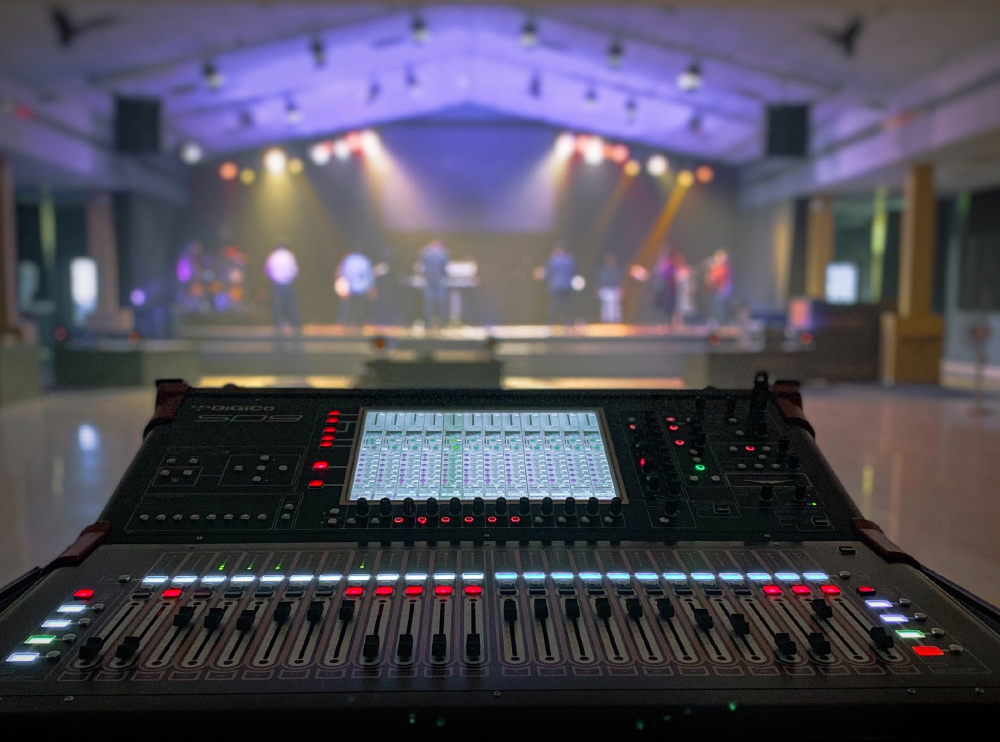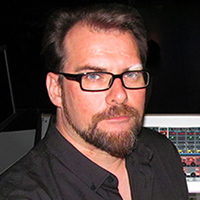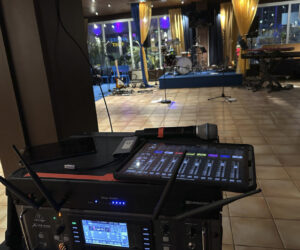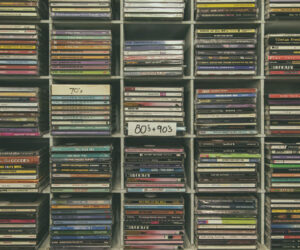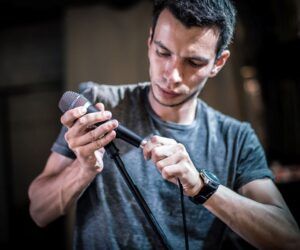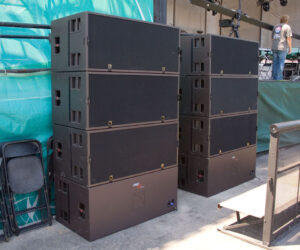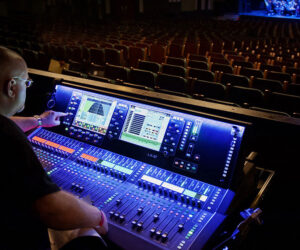I’m sure that most sound engineers are familiar with the following scenario: you turn up to a venue and the mixing console isn’t where you expect it to be – it might be off to one side, underneath a balcony, in the very back of the room, up high in the stalls or stuck in a corner somewhere.
This happened to me recently at an outdoor show in Mexico. The front of house position was placed off to one side so that it was directly in front of the right PA hang. Thankfully we had a sound check the day before so I was able to walk around and get a sense of how the PA was sounding in the center as well as off to the side — but when it came to show time I wasn’t able to freely move around, due to a capacity crowd, so I had to imagine what it would sound like in the center and adjust what I was doing at the side in order to make it work – which was not ideal.
One would think that the decision of where to place the console would be based on the exacting requirements of the sound engineer being in the best place to judge how the sound system is sounding within the acoustic environment, but all too often it’s sighted based on convenience. It’s not uncommon for the console to be placed where it doesn’t get in the way, where it’s easy to run the required power and signal cabling, or where it doesn’t take up space which could be occupied by paying customers.
I once did a show where someone decided to dispense with all that expensive multi-core and place the console at the side of the stage – yes, you read that right, they put the front of house console at the side of the stage. They quite proudly pointed out that they had gone to the trouble of providing me with pair of monitor wedges so that I could hear the main mix. but they appeared to completely fail to understand that I needed to hear how the PA is working out front where the audience is without the distraction of the nearby stage noise in order to do my job.
Factors In Play
But what is the ideal position for the console? There’s no definitive answer, it depends on various factors: the nature, size and positioning of the sound system and the size, shape and nature of the room being the main two. Some will say that as long as you can see all the loudspeaker boxes you should be able to hear them and get a reasonable idea of what the system sounds like; others will say that as long as you’re in the middle of the area where the majority of the audience are located you’re in the best position to produce a good sounding mix.
As a rule of thumb, in venues where I have the choice, I like to think of an equilateral triangle, the base of which is defined by the distance between the two main loudspeaker stacks or hangs with the point extending out into the audience area – I set up just behind that point. It also never hurts to consult with the system tech or house engineer as they may well have a better idea where the “sweet spot” is.
Most of the time we’re working on the assumption that if we position ourselves in the center of where the various elements of the system align, we’re in the best position to produce a mix which should sound good for as many people as possible. Obviously this assumption can be tested by the acoustic nature of the specific space and the way it reacts to the placement and nature of the sound system, but that’s hopefully where experience kicks in.
When I’m mixing, I’m reacting in real time to the rapidly evolving musical landscape in front of me as various elements combine to comprise the musical performance. Having built up the individual elements of the mix during the sound check, I sit back and listen to the whole while allowing myself to be distracted by any elements which aren’t quite working properly. I then zoom in to tightly focus on that individual element, tweak and adjust it, then zoom out to make sure it’s now contributing positively to the whole mix.
I repeat this process to constantly re-evaluate the mix as it unfolds in front of me to make sure it continues to work as a grand melange of multiple sonic elements. This, for me, is the pure joy of mixing a live performance, it’s technical and exacting but also instinctive and creative, demanding and satisfying in equal measure.
But what if the console isn’t in the sweet spot? You’re no longer able to react instinctively as you’re not hearing exactly what the sound system is doing. If you’re outdoors, you might not be hearing the correct balance between the main elements of the sound system, such as a flown array and ground mounted subs, making it hard to judge the overall tonal balance of the mix.
If you’re indoors, there’s the additional issue of the balance between the direct and reflected sound coloring your perception. It adds to the mental process, an extra layer of processing or interpretation where you have to translate what you’re hearing and imagine how it would sound in the sweet spot so that you can then decide what tweaks are required to the individual elements to make the mix work as a whole.
Thankfully this isn’t a big stretch for the average sound engineer. A key part of the job is being aware of how the mix may sound in different areas of the venue – not to mention how it will sound when it’s full of people. We know that the audience members closest to the loudspeakers are mostly hearing the pure direct sound whereas those further away will hear the direct sound combined with a certain amount of sound reflected from the boundaries of the room (assuming you’re indoors).
Ideally we want to ensure everyone is within a zone where the direct sound is louder than the reflected sound – a point defined as the critical distance by acousticians – but we’re always mindful of how the mix may sound different to different sections of the audience, and we’re constantly striving to produce a sonically even and musically pleasing mix for as much of the audience as possible.
Modern Advantages
Advances in sound system design and our ability to precisely model how the system will act in a given acoustic space has made it possible to enlarge the sweet spot to include more of the audience. The widespread domination of digital consoles has also handed us a useful tool to deal with situations where the desk is in the wrong place – I refer, of course, to remote control. Practically every digital console I’ve ever used has a corresponding tablet app that can easily be connected to the console via a wireless router to enable control of the key mix parameters. I always travel with a wireless router and tablet because you never know when you’re going to need them.
I tend to use remote control in the sound check to walk the room and get a feel for how the mix sounds in the different zones of the space as well as how key changes to the balance of the mix come across in those differing zones. It’s also really useful for adjusting relative levels of the mix elements in lip and side fills, especially as you get closer to the stage and any sound from the back-line or monitors starts to color the overall mix.
If I’ve done this comprehensively I’m usually quite happy to stand at the console and mix the whole show from there knowing what I know about how the space is reacting. I only use remote control during the show if the desk is in a particularly bad position – partly due to the fact that it can be difficult to move through a busy crowd, but mainly because I don’t like to stray too far from the console linked only by a potentially tenuous Wi-Fi signal.
I was once warned about the specter of someone hacking into the console using a remote control app during a show and taking over the mix, and while this is indeed a scary idea, as long as you deploy reasonable security measures, such as a secure Wi-Fi password and a console pass code (where available), it shouldn’t be a big concern. I’ve certainly never heard of it happening to anyone I know, so it’s probably just an urban myth produced by an over-imaginative mix engineer.
There will always be situations where the console isn’t located optimally, but with a little bit of forward planning and careful preparation prior to show time you should still be able to produce a decent sound for the majority of the audience.


